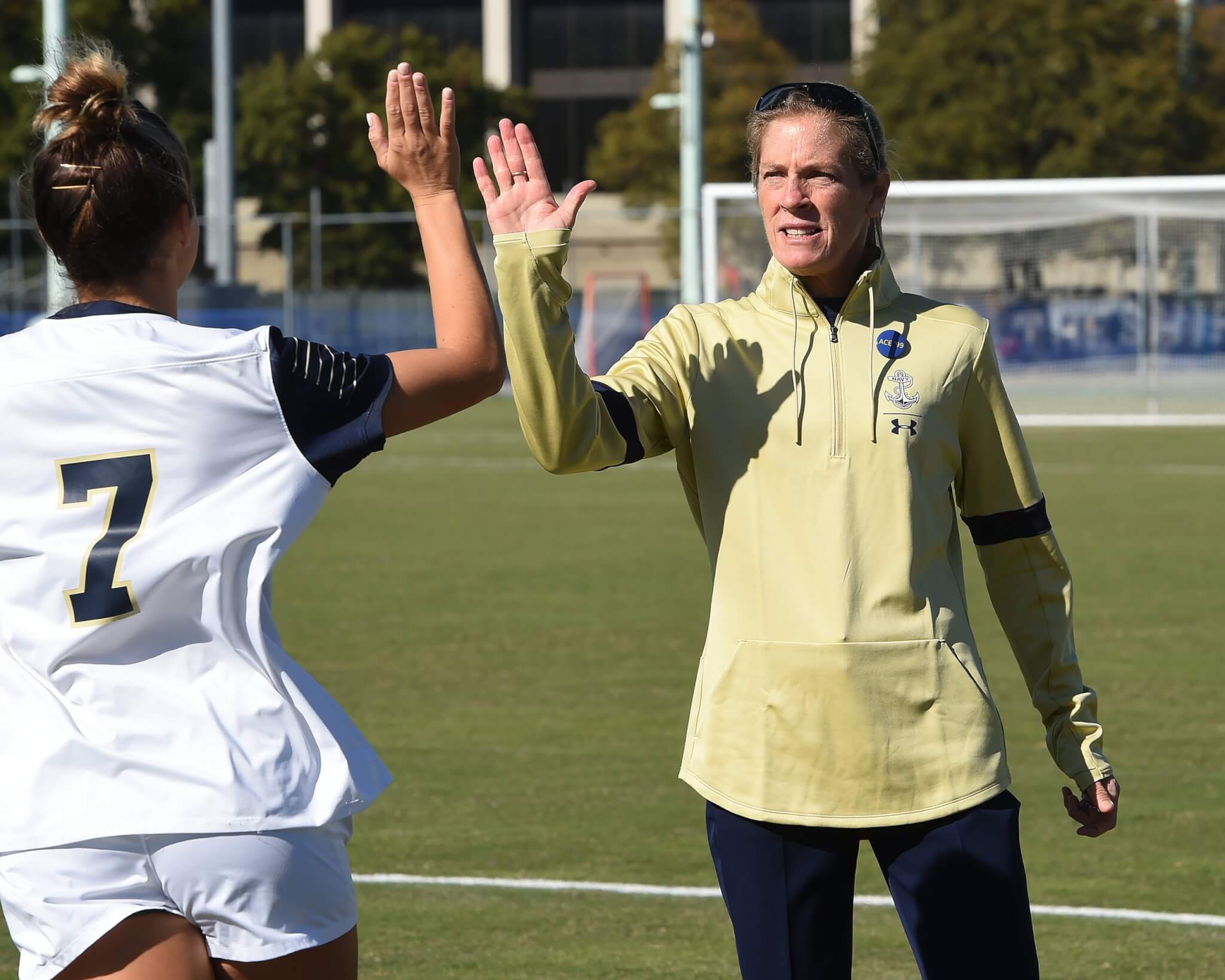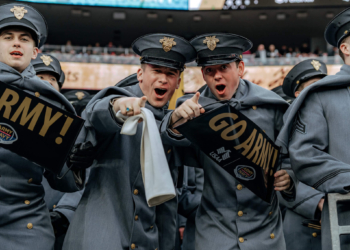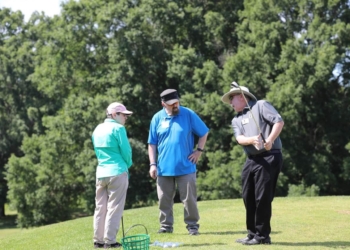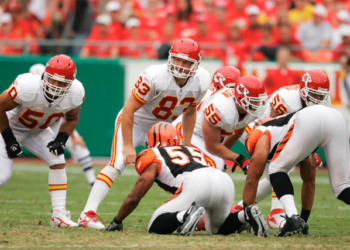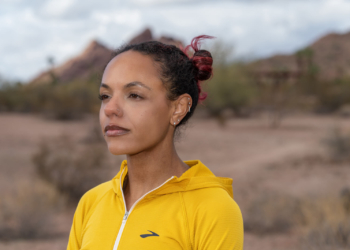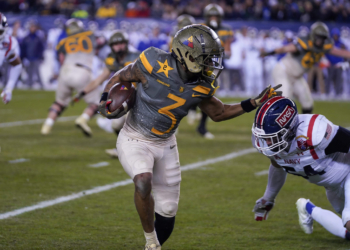Early during Carin Gabarra’s coaching career at Navy, it was not uncommon for her to pack several small orange cones for running sprints.
They were not for her players.
Gabarra, a key piece of Team USA’s gold-medal-winning squad in the first Olympic Games that included women’s soccer in 1996, kept her spot on the national team after the academy hired her. She needed the practice.
“Sometimes you would look out of a window on the seventh floor of a hotel and look down, and she’s doing sprints back and forth, using the parking-lot lines as her lines,’’ said Rob Blanck, in his 26th year as an assistant coach at Navy. “Nothing fazes her. She’s as resilient of a human being that I’ve ever known in my life.’’
Navy hired Gabarra in 1993 as it sought to promote women’s soccer to an NCAA-sanctioned sport. She is the Patriot League’s all-time leader in victories and has led Navy to at least a share of the conference title 10 times, including an outright championship in 2019. Four of those seasons ended in the NCAA Tournament.
The Patriot League canceled fall sports because of the coronavirus pandemic, but Navy was granted an exemption and may try to play an abbreviated non-conference schedule.
“Starting from scratch and finding recruits and going out and watching them play, it takes a lot to build, because the kids who were on the team when I got here didn’t come to play soccer,’’ Gabarra said. “I had to get certain recruits and get in athletes who wanted to do this, along with attending the Naval Academy. It’s a mind shift.’’
Gabarra (nee Jennings) arrived at Navy after previous stints as the head coach at Westmont College in California and as an assistant at Harvard. Kerry Kuykendall, who played club soccer at Navy in the early 1990s, was from Gabarra’s hometown and mentioned her to school officials as a viable coaching candidate as they sought to grow the sport.
It was a good match.
“There weren’t just that many programs in the United States at that point, … and now it has just evolved so much,’’ Gabarra said.
Gabarra was undaunted by the challenge of building a successful program at an institution with such high standards. She has faced longer odds.
Women’s soccer did not enjoy anywhere near the popularity it has achieved in the United States before Gabarra and other Hall of Fame players such as Mia Hamm, Kristine Lilly and Julie Foudy arrived on the national pitch.
Gabarra, a forward, was chosen the most outstanding player of the first Women’s World Championship (which became the World Cup) in 1991. She was selected to the sport’s all-century team in 1999.
“I’m a purist of the game,’’ Gabarra said.
Not that she shines a spotlight on her credentials.
Cadie Higginson graduated in May after playing four seasons at Navy. During her recruitment, she was unaware of Gabarra’s accomplishments. Then a friend suggested she Google Gabarra.
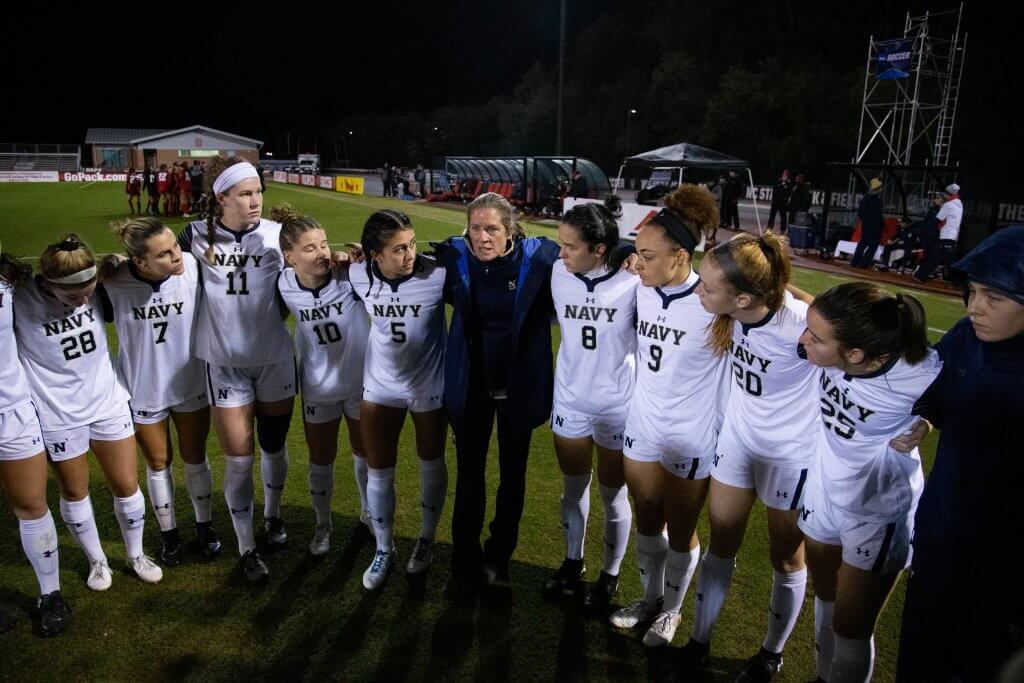
“It was like, ‘World champion. MVP. Olympic. All of this stuff,’’’ said Higginson, who plans to study for a year at Oxford before joining the Marines. “And I just came in intimidated by her, and then you meet her. She’s just the most down-to-earth person you could possibly meet.’’
Entering her 28th season at Navy — only men’s golf coach Pat Owen, who arrived in 1991, has been there longer — Gabarra wants her players to build their own legacy. That’s why a sheet of paper is left in each player’s locker, chronicling the players who have worn her number in program history.
It’s a reminder of how the past is linked to the present.
“Every year feels like new,’’ Gabarra said. “It’s never the same thing because of the difference in players and people coming in. I’ve just been fortunate that I’ve stayed in one place for so long.’’
Read comments
